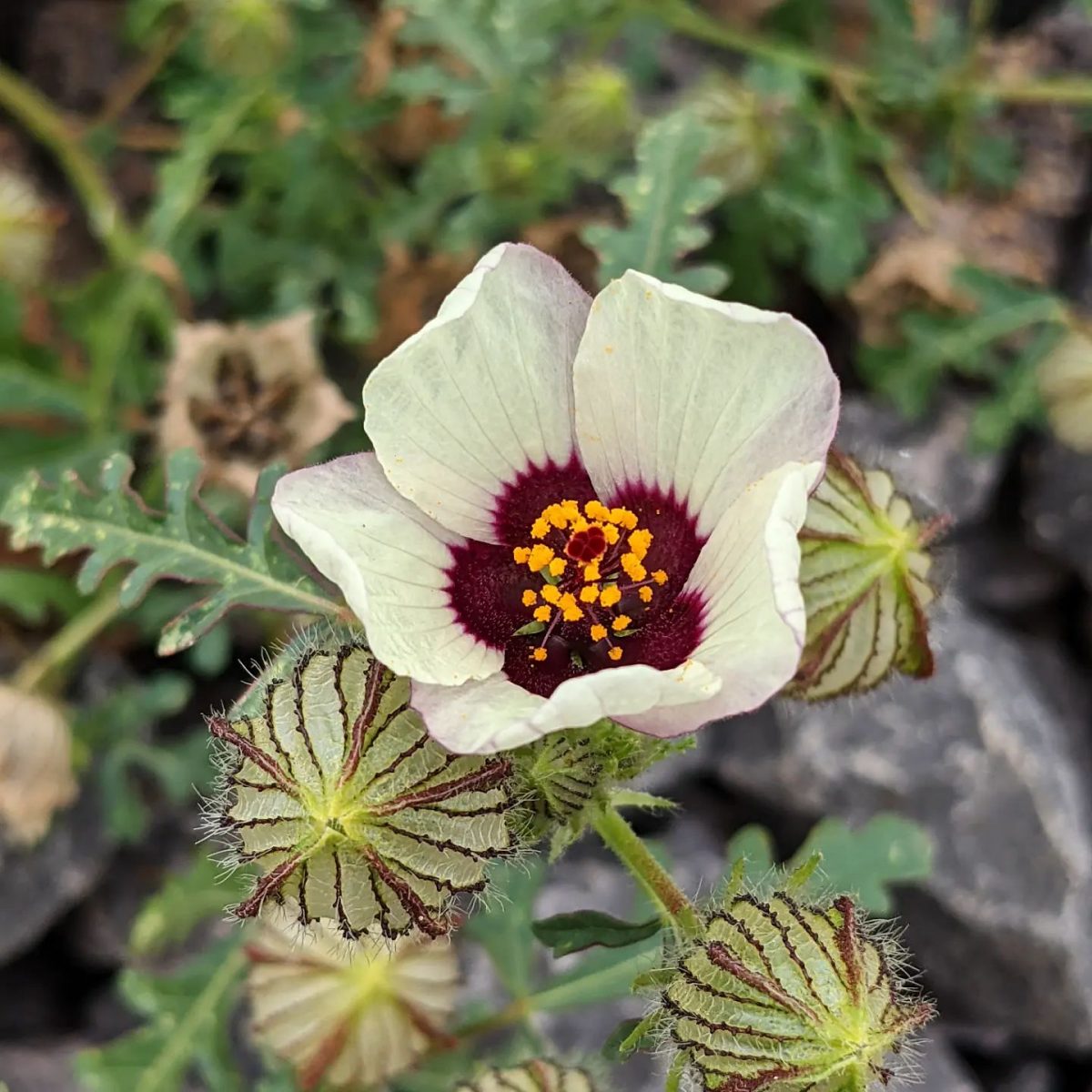Narrow-leaved Bladder Ketmia (presumed Hibiscus tridactylites), a persistent weed of inland cropping, reclassified an Oz native in 2011.
Long thought a naturalised or cosmopolitan outpost of the Old World species Hibiscus trionum (Flower-of-an-hour), recent work reclassified Australian plants into three new indigenous species. One of these, H. tridactylites, may first have been restricted to the NW slope of NSW and QLD but spread widely in the 1900s to become a weed of wheat and cotton. A more northern sp. also infests crops; the third is threatened, found only in coastal NSW and NZ.
H. tridactylites was collected in 1832 by the Mitchell expedition, on a Moree Plains site where ‘most of the ground was covered with hibiscus (with red stalk and small flower) which grew to the height of twenty inches…’ Found outside any substantive colonial activities, specimens were sent to England and named by John Lindley of the RHS, but later lumped into H. trionum by George Bentham in his Flora Australiensis, and subsequently treated as introduced.
Collections from Melbourne’s Coode Island in 1908, Port Pirie SA and Adelaide (1910s) are all relabelled as H. tridactylites; geographically anomalous, it is possible the foreign species was introduced at these ports. This happened in NZ, where H. trionum was collected in 1897 around ports and has endured.
Drought-resistant grains and farm mechanisation spread the native species from the NW slope into the Murray and Wimmera. In NSW it was collected at Cobar in 1906, Hay in 1911, Leeton and Holbrook in 1913; a 1919 newspaper had it at Pinnaroo SA. The plant then spread across inland Victoria, with 1920s-30s newspaper reports at Swan Hill, Mologa, Appin, Boosey, Shepparton, Colbinabbin, Bendigo, Ararat and Casterton.
Photographed plants are a recent incursion into Melbourne’s outer west on red sodasols and development disturbance. One Truganina population was spread along a km of road medians and drains by wind, trucks and mowers; the plants were also seen in 2021 on a nature strip roughly 2 km SW, and in 2022 several km NE at Derrimut.
View Original Post on Instagram
Search for information about presumed Hibiscus tridactylites in the Flora of Victoria
View information and occurrences of presumed Hibiscus tridactylites on the Atlas of Living Australia










